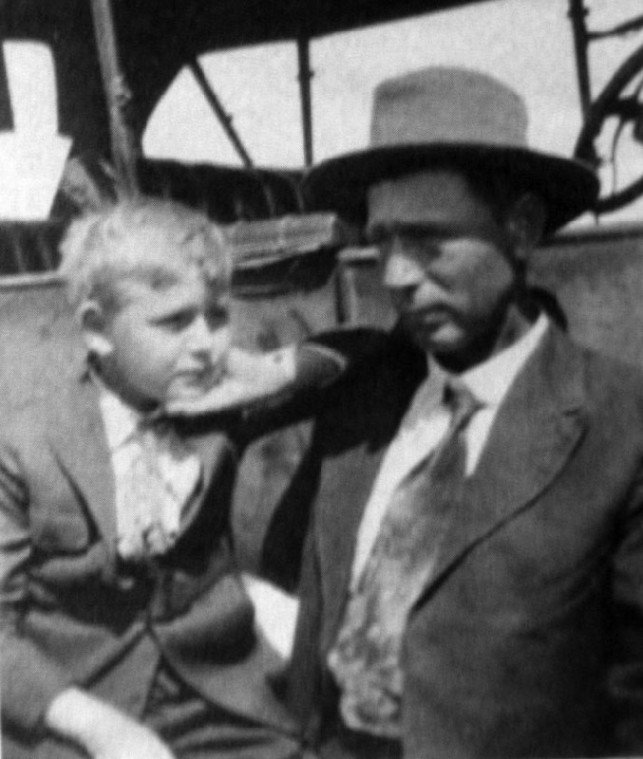It took me a couple of hours to assemble the bookcase I’d
recently bought at Target. When I was done, it looked nice in my
living room with its shelves filled. And among the volumes was
”
The Cheek Family Chronicles.
”
It took me a couple of hours to assemble the bookcase I’d recently bought at Target. When I was done, it looked nice in my living room with its shelves filled. And among the volumes was “The Cheek Family Chronicles.”
At more than 1,100 pages, Jeffrey Lewis Williams’s hefty tome is a detailed history of the Cheeks over the last 700 years. Father’s Day coming up Sunday and me racking my brain for a column idea, I knew the book might offer an opportunity for an exploration on the lineage of my forefathers.
So finding my name and short bio listed on page 192, I worked my way backward through seven generations of Cheek males I am descended from. Strolling down my own ancestral path, I felt as if I was following a fascinating trail of biblical “begats” for the Cheek kinfolks.
On page 191, Williams lists my dad Walter Raymond Cheek (1912-1985) who, of course, begat me (born 1966). And before him was his dad, Daniel Nicholas Cheek (1876-1943), who was begat by John Nicholas Cheek (1851-died year unknown), who was begat by Milus R. Cheek (1823-1897), who was begat by Edmond R. Cheek (1788-1876), who was begat by Jeremiah Cheek (1764-1823).
The family chronicles ends the line of my Cheek ancestors here. So out of curiosity, I got on the computer and did a Google search to see if more info might exist about Cheek males who preceded Jeremiah. That’s how I discovered the Web site www.moonzstuff.com put together by Rebecca Moon of Sunnyvale.
Although the information at this point gets uncertain due to lack of documentation, Moon’s Web pages suggests that Jeremiah Cheek’s father might have been John Cheek of Anson County, N.C. (born about 1720- death date unknown). This fellow’s father was possibly Richard “of Beaufort” Cheek (born late 1600s and died 1745) whose father was John Cheek Sr., a man possibly born in England around the year 1650 who later settled in what’s now Essex County, Va.
From Williams and Moon’s research, I can trace my American Cheek lineage back 10 generations. It’s exciting seeing how far the roots of my family tree descend into U.S. history. But I’d love to learn much more about these men whom I stand with in the genealogical chain.
I can get a hint of their lives from recorded dates of marriages, children produced, and births and deaths. “The Cheek Family Chronicles” even documents that my great, great, great grandfather Edmund served in the 3rd Battalion Tennessee Militia Infantry during the War of 1812 and received farmland for his service.
But unfortunately, the real details about my forefathers are left out of the records. What were their characters like? What were their religious beliefs and personal values? What were their marriages like? How did they get along with their kids?
These details are mysteries. Much of the stories of these 10 men are, unfortunately, long lost in time. I personally only know the story of my dad Raymond and my grandfather Daniel with any real relevance.
But technology is changing that. With amazing advances in genetic research over the last 10 years, we now have new ways to get glimpses of our ancestors. Genetic genealogy is an emerging science giving us the chance to read in our inherited chromosomes the genetic story of the people who preceded us.
Moon is doing genetic genealogy research on the Cheeks, so I recently discussed this project with her in a phone chat. She’s looking at the genetic “markers” in Y chromosomes in the DNA sequence, she said. These markers are minor mutations in the genetic code that all sons inherit from their fathers.
“You can take two men and compare their Y DNA and find out if they have a common ancestor,” she said. “This is very useful to people who do genealogy.”
The lab technology to trace these DNA markers is becoming affordable. At under $200, it’s low-priced enough for many people who are curious about their genetic ancestry. It’s also being used in the five-year Genographic Project sponsored by the National Geographic Society and IBM to study the migration of humans from Africa to other regions on Earth.
For me, getting a glimpse of my family lineage has made this year’s Father’s Day a bit more interesting. Finding out about my ancestors helps me see that I’m part of a much bigger story. The colorful details of that story could definitely fill the shelves of my brand-new bookcase.














